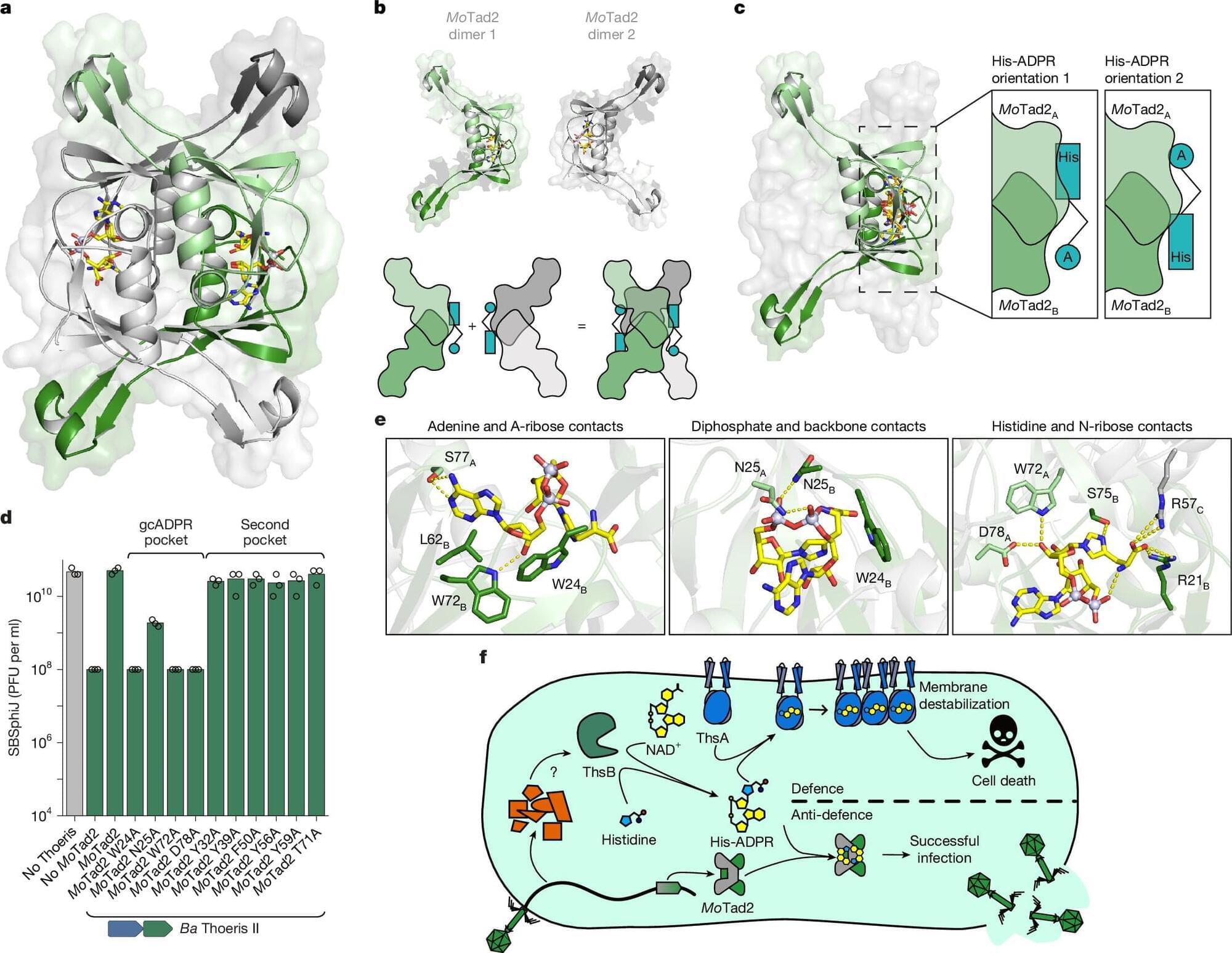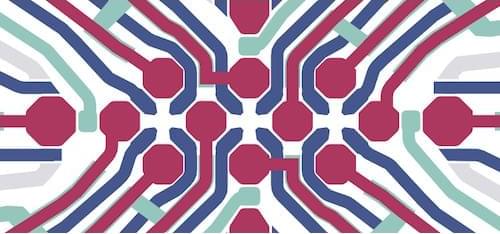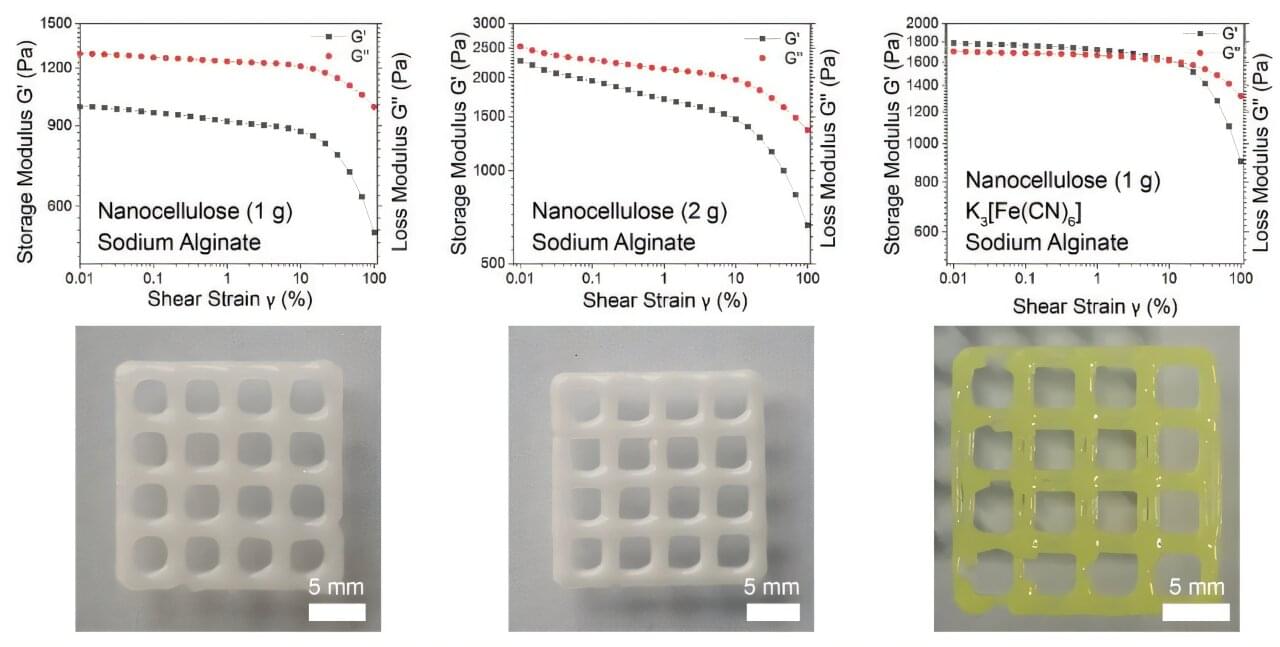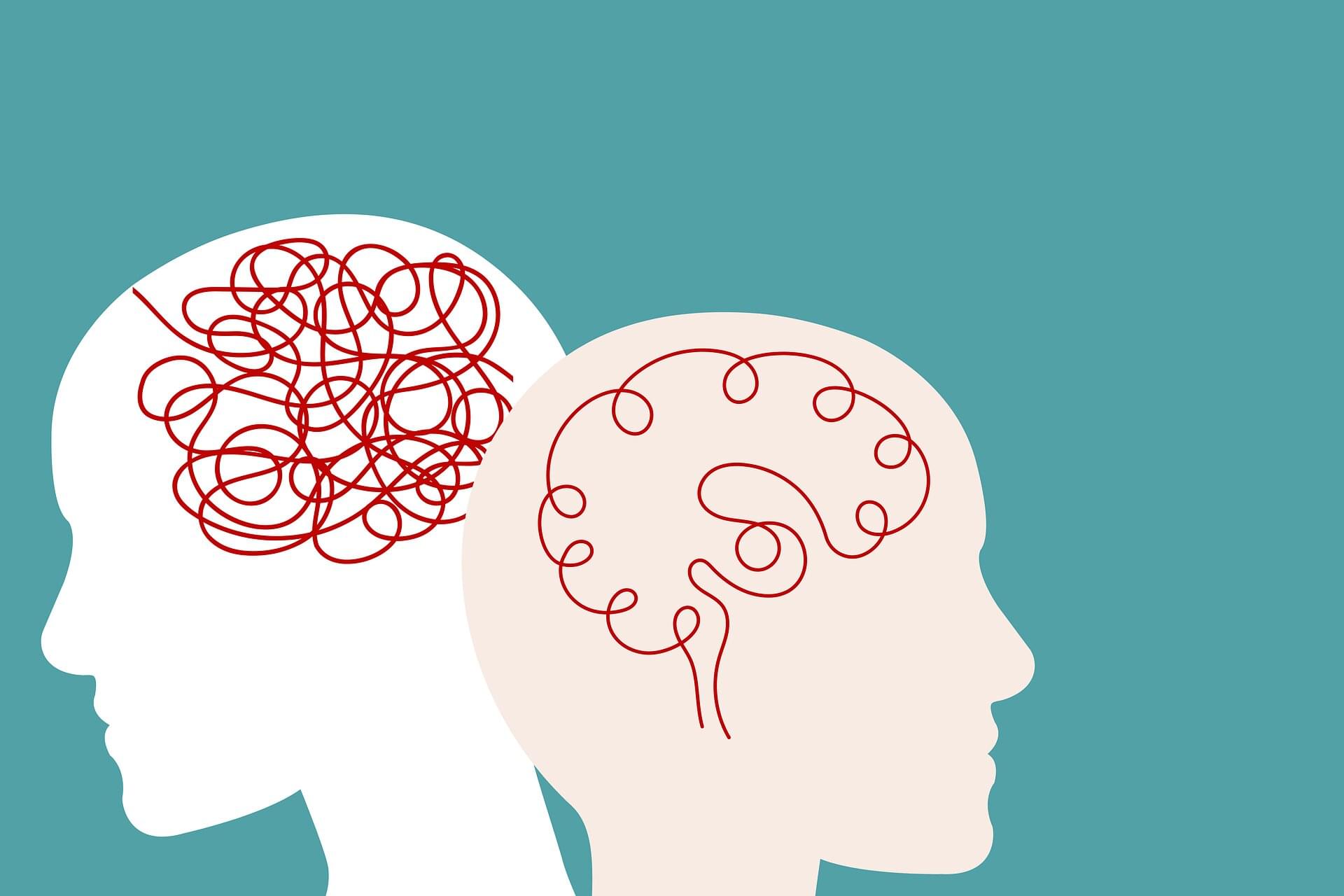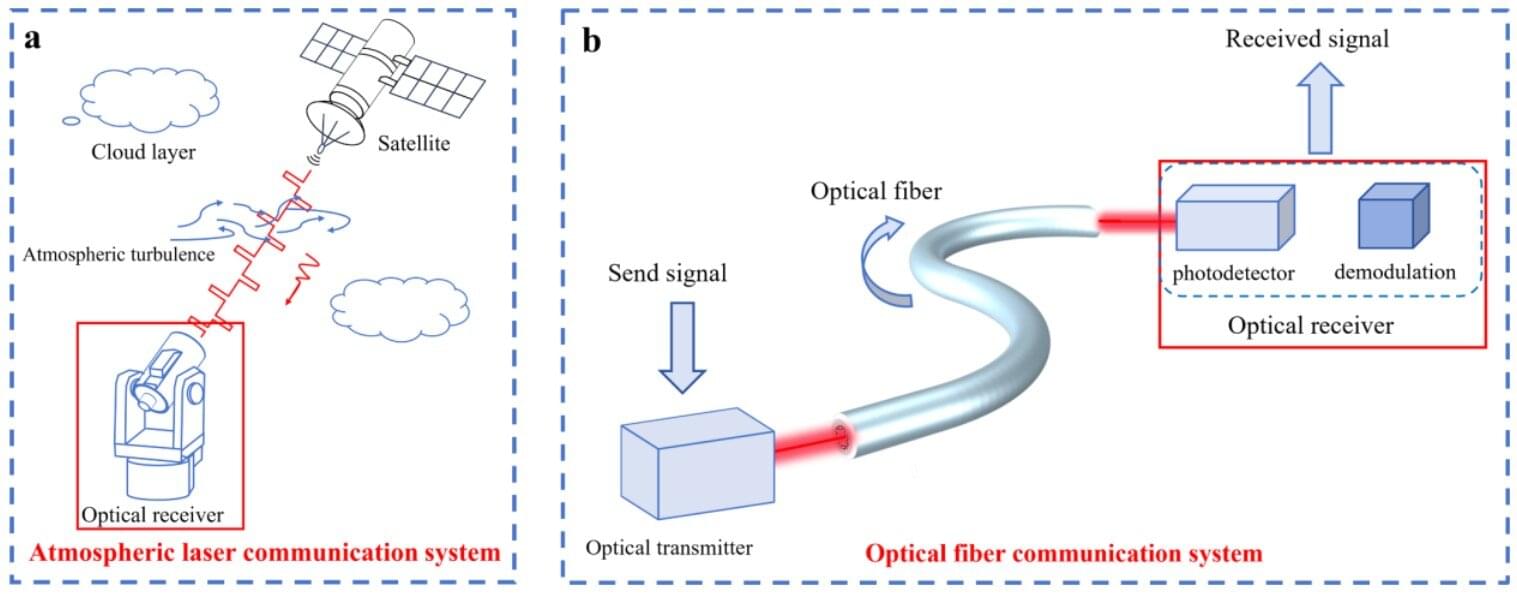AI is already being used in the legal field. Is it really ready to be a lawyer?
Disproportionately Enlarged Subarachnoid-Space Hydrocephalus on MRI in Pathologically Confirmed Progressive Supranuclear Palsy
Posted in biotech/medical, neuroscience | Leave a Comment on Disproportionately Enlarged Subarachnoid-Space Hydrocephalus on MRI in Pathologically Confirmed Progressive Supranuclear Palsy
Background and ObjectiveSeveral studies have shown that idiopathic normal-pressure hydrocephalus (iNPH) can mimic other neurodegenerative disorders, particularly progressive supranuclear palsy (PSP). In this study, we investigated iNPH clinical and…
A research team has uncovered a previously unknown type of immune signaling molecule—a novel compound combining histidine and ADP-ribose—produced by bacteria’s Thoeris II defense system in response to viral infection. This finding expands our understanding of bacterial immunity and may pave the way for innovative tools in biotechnology, gene editing, and antimicrobial therapy.
The paper, titled “TIR domains produce histidine-ADPR as an immune signal in bacteria,” is published in the journal Nature, and the team includes scientists at Vilnius University’s Life Sciences Centre (VU LSC), together with colleagues from the Weizmann Institute of Science (Israel) and Harvard Medical School.
The discovery sheds light on how bacteria, much like humans, communicate viral threats at the molecular level—in this case, triggering a self-sacrificing response to halt virus spread and protect bacterial populations. Beyond its fundamental significance, the finding opens exciting avenues for rethinking immune mechanisms and virus-host interactions.
Machine learning automates the control of a large and highly connected array of semiconductor quantum dots.
Even the most compelling experiment can become boring when repeated dozens of times. Therefore, rather than using artificial intelligence to automate the creative and insightful aspects of science and engineering, automation should focus instead on improving the productivity of researchers. In that vein, Justyna Zwolak of the National Institute of Standards and Technology in Maryland and her colleagues have demonstrated software for automating standard parts of experiments on semiconductor quantum-dot qubits [1]. The feat is a step toward the fully automated calibration of quantum processors. Larger and more challenging spin and quantum computing experiments will likely also benefit from it [2].
Semiconductor technology enables the fabrication of quantum-mechanical devices with unparalleled control [3], performance [4], reproducibility [5], and large-scale integration [6]—exactly what is needed for a highly scalable quantum computer. Classical digital logic represents bits as localized volumes of high or low electric potential, and the semiconductor industry has developed efficient ways to control such potentials—exactly what is needed for the operation of qubits based on quantum dots. Silicon or germanium are nearly ideal semiconductors to host qubits encoded in the spin state of electrons or electron vacancies (holes) confined in an electric potential formed in a quantum dot by transistor-like gate electrodes.
The results of a survey of middle-aged pulsars suggest that a feature previously seen around a handful of pulsars might be ubiquitous.
Comets that have hit Earth have been a mixed bag. Early in Earth’s history, during the solar system’s chaotic beginning, they were likely the source of our planet’s water, ultimately making up about 0.02% of the planet’s mass. (Mars and Venus received a similar fraction.)
Comets brought complex organic molecules and the biosphere, but later posed a threat to the same in cometary collisions. A comet (or asteroid) likely caused the Tunguska Event in 1908 in Russia, and a comet fragment likely triggered the rapid climate shift of the Younger Dryas 12,800 years ago, with its widespread extinctions.
If such collisions happen here, they likely take place in other solar systems as well. Now three scientists in the United Kingdom have modeled the impacts of an icy cometary collision with an Earth-like, tidally locked terrestrial planet. Such objects are prime candidates in the search for habitable exoplanets outside our solar system.
Bio-batteries constructed by electroactive microorganisms have unique advantages in physiological monitoring, tissue integration, and powering implantable devices due to their superior adaptability and biocompatibility. However, the development of miniaturized and portable bio-batteries that are plug and play and compatible with existing devices remains a challenge.
In a study published in Advanced Materials, a team led by Zhong Chao, Liu Zhiyuan, and Wang Xinyu from the Shenzhen Institutes of Advanced Technology of the Chinese Academy of Sciences, collaborating with Wang Renheng from the Shenzhen University, developed a miniaturized, portable bio-battery that enables precise control over bioelectrical stimulation and physiological blood pressure signals.
The researchers encapsulated Shewanella oneidensis MR-1 biofilms within alginate hydrogels to develop living hydrogels, which can be 3D printed into defined geometries for customized fabrication. Inspired by lithium-ion battery fabrication, they developed a miniaturized bio-battery (20 mm in diameter, 3.2 mm in height) using living hydrogel as the bio-anode ink, K3[Fe(CN)6]-containing alginate hydrogel as the cathode ink, and a Nafion membrane as the ion exchange membrane.
Depression, schizophrenia and other mental health conditions affect 1 in 4 people in their lifetime, but the mechanisms underlying these conditions are poorly understood. New research led by researchers at the University of Bristol has linked the body’s immune response with schizophrenia, Alzheimer’s disease, depression, and bipolar disorder. The study demonstrates mental health conditions might be affected by the whole body as well as changes in the brain. The findings could pave the way for better treatments of some mental health conditions.
The work appears in Molecular Psychiatry.
Most people with depression or schizophrenia are treated with drugs that work on brain chemicals such as serotonin and dopamine. However, one in three people with these conditions do not benefit from these treatments, suggesting that other mechanisms are involved.
Drying droplets have fascinated scientists for decades. From water to coffee to paint, these everyday fluids leave behind intricate patterns as they evaporate. But blood is far more complex—a colloidal suspension packed with red blood cells, plasma proteins, salts, and countless biomolecules.
As blood dries, it leaves behind a complex microstructural pattern—cracks, rings, and folds—each shaped by the interplay of its cellular components, proteins, and evaporation dynamics. These features form a kind of physical fingerprint, quietly recording the complex interplay of physics that unfolded during the desiccation of the droplet.
In our recent experiments, we explored how blood droplets dry by varying both their size—from tiny 1-microliter drops to larger 10-microliter ones—and the angle of the surface, from completely horizontal to a steep 70° incline. Using an optical microscope, a high-speed camera, and a surface profiler, we tracked how the droplets dried, shrank and cracked.
Polarization, along with intensity, wavelength, and phase, is a fundamental property of light. It enhances contrast and resolution in imaging compared to traditional intensity-based methods. On-chip polarization devices rely on complex four-pixel arrays or external polarizers.
Current solutions face two key challenges: limited spectral response in plasmonic and metasurface-based devices, and difficulty in simultaneously detecting the angle (AoLP) and degree (DoLP) of linear polarization in low-dimensional anisotropic materials. Achieving wide-spectrum, high-precision polarization detection remains a critical challenge in the field.
To address this, a research team led by Prof. Li Liang from the Institute of Solid State Physics, the Hefei Institutes of Physical Science of the Chinese Academy of Sciences, in collaboration with Prof. Zhai Tianyou from Huazhong University of Science and Technology, has developed a novel “torsion unipolar barrier heterojunction” device.


